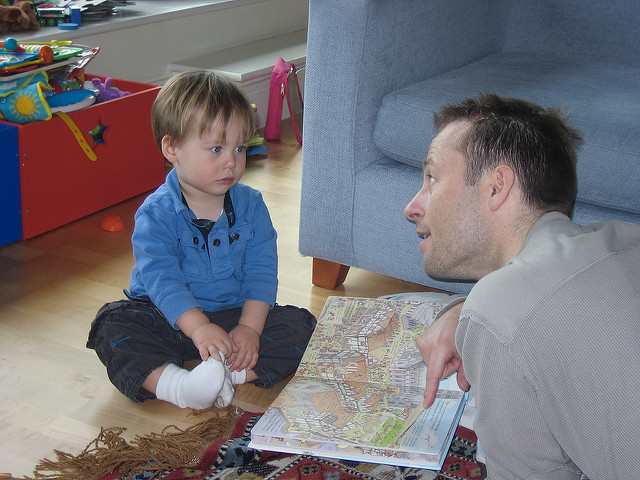Parent Coaching Module 3: Talking Bodies (Part 1)
The importance of using nonverbal communication
“Body language can communicate my thoughts and feelings”
Goal: This module stresses the importance of using nonverbal communication (body language) for successful interactions with others. In this module you will learn how to help your child learn to communicate through body language.
People often communicate their thoughts, desires, and feelings to others in nonverbal ways through body language, which includes eye gaze, facial expressions, hand gestures, body position or posture, and sounds. Helping your child recognize the power of her own nonverbal communication and learn to use it purposefully will help her realize the power of communication.
Why is this important?
- Nonverbal communication is the foundation for other forms of communication, including speech.
- Facial expressions, gestures, and body position provide a way for your child to express his desires, feelings, and interests.
- Body language provides children who are nonverbal with a way to express themselves.
- Using and understanding body language is a way for your child to engage in communication and interaction with others.
What can you do to help your child learn about nonverbal communication? The following sections will guide you and offer activities you can use to help your child learn to use nonverbal communication more effectively. Additional reading and videos will guide your learning, and we have included “Refrigerator Posts” you can download, print, and post on your fridge, playroom, or anywhere else as a handy reminder of ways you can incorporate learning often throughout the day.
Click on the following links to view each step to teaching your child to use nonverbal communication.
Step 1: Do less so your child does more
Step 2: Wait a little
Step 3: Create lots of practice opportunities throughout the day
Step 4: Persist
Step 5: Position yourself
Module Summary: The goal of this module had been to teach your child the importance of using his body to communicate with others. By doing less for your child, waiting a little, and creating lots of communication opportunities, you are encouraging your child to use gestures, gaze, and facial expressions to let you know what he wants, feels, or thinks. Being persistent in your efforts and remembering to position yourself to foster eye contact will help your child learn to communicate through nonverbal communication and provide a foundation for speech production. You will know you are being successful when you find yourself doing less for or to your child, and more with your child.

Refrigerator Posts: Download and print these pages to post as a reminder of ways you can help your child learn to use nonverbal communications.
Back to Parent Coaching Modules Homepage

